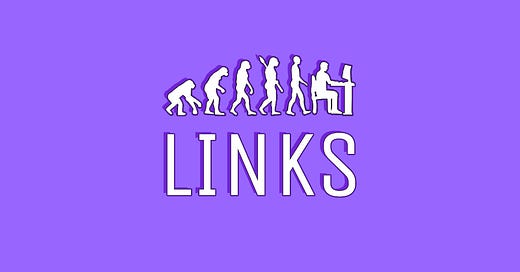Welcome to LINKS — my attempt to provide Rhapsody readers with five interesting stories that tell us something about what it means to be human. LINKS is published every Wednesday. Have a link you want to share? Drop it in the comments.
Museums, elitism and activism: Why you should never, no matter how good the cause, throw soup at a masterpiece
By Helen De Cruz, Wondering Freely
“The argument is ‘At least it gets us to talk about climate change,’ but we are already talking. Awareness is not the issue. In many countries, the public is aware climate change is happening, and worry about it. But the narrative has cleverly shifted to ‘any cure will be worse than the disease’ and ‘it's too late already.’ It's unclear how throwing soup at masterpieces is going to change that.”
Is aging without illness possible?
By Cassandra Willyard, Science News
“Some scientists think there’s a better way. These researchers — part of a burgeoning field called ‘geroscience’ — aren’t seeking immortality. The focus is much more pragmatic: By addressing the root causes of aging, they hope to stave off the disability and diseases that can make old age so miserable. They want to help people feel healthy for longer, compressing the years of illness that often accompany old age into a much shorter time frame. ‘Let’s build a medicine that would be safe enough for someone in midlife to take almost like a supplement, like a daily vitamin, but with much more profound biological effects,’ says James Peyer, CEO of Cambrian Bio in New York City.”
Poems of Witness and Possibility: Inside Zones of Conflict
By Christine Weeber, Ather Zia, & Toiba Naseema, Sapiens
“Poets in this collection speak to the forces that subject bodies and environments to violence—from Islamist militant attacks in Indonesia and Sri Lanka, to extreme environmental degradation in the Niger Delta region, to a state-influenced civil war in Manipur (Northeast India), and the decadeslong Israel-Palestine conflict.”
Extinct ape’s inner ear holds clues to how humans learned to walk upright
By Laura Baisas, Popular Science
“From this comparison, the team believes that three steps led to the evolution of human bipedalism. Apes first moved in the trees in a style that is similar to how today’s gibbons swing through trees. The last common ancestor of both apes and humans used a combination of climbing, clambering, walking on four limbs while on the ground, and using only two limbs in trees to get around. It was from this mix of motion that bipedalism eventually became dominant in humans. It’s possible that once our species got a solid grasp of walking on two legs, more fine motor skills that are related to the inner ear like balance could be refined over time. “
Elon Musk’s Neuralink Has Implanted Its First Chip in a Human Brain. What’s Next?
By Ben Guarino, Scientific American
“Neuralink’s original ambitions, which Musk outlined when he founded the company in 2016, included meshing human brains with artificial intelligence. Its more immediate aims seem in line with the neural keyboards and other devices that people with paralysis already use to operate computers. The methods and speed with which Neuralink pursued those goals, however, have resulted in federal investigations into dead study animals and the transportation of hazardous material.”





Dear Joe, Thank you so much for highlighting our latest poetry series at SAPIENS Anthropology Magazine! Please add SAPIENS after our author bylines to "Poems of Witness and Possibility: Inside Zones of Conflict," as you have on the other article links cited. Thank you.